16 Natural Wonders In Europe You Absolutely Need On Your Travel Bucket List

Europe isn’t just about historic cities and cultural landmarks – it’s home to some of the world’s most spectacular natural wonders. From cascading waterfalls and ancient glaciers to mystical rock formations and serene lakes, the continent offers breathtaking landscapes that will leave you awestruck.
Pack your hiking boots and camera as we explore these incredible natural destinations that deserve a spot on every traveler’s bucket list.
1. The Matterhorn, Switzerland

Standing before this pyramid-shaped peak, I couldn’t help but feel incredibly small. The mountain seems to pierce the sky like a natural cathedral, commanding respect from even the most seasoned alpinists. Its nearly symmetrical faces rise dramatically from the surrounding landscape, creating one of the most recognizable silhouettes in the world.
Have you ever seen a mountain that looks like it was drawn by a child’s perfect triangle? That’s the Matterhorn for you! Straddling the border between Switzerland and Italy, this 14,692-foot giant has claimed over 500 climbers’ lives since the first ascent in 1865. Even if you’re not scaling its treacherous faces, the views from Zermatt will leave you speechless.
2. Giant’s Causeway, Northern Ireland
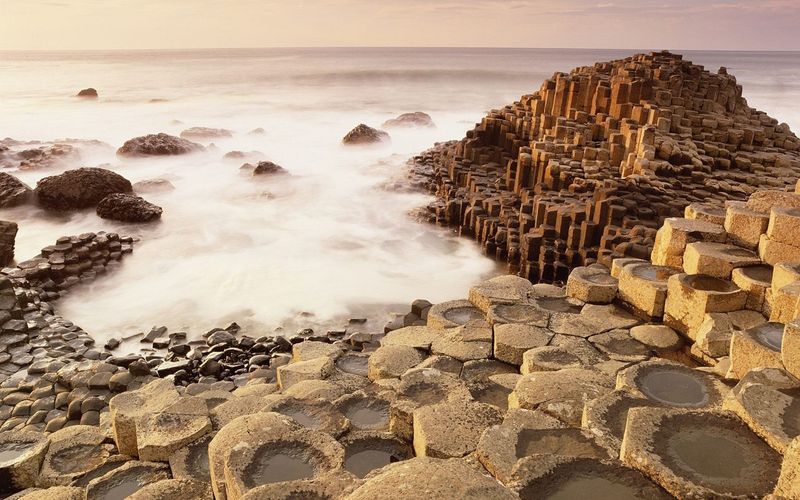
Thousands of hexagonal basalt columns march straight into the churning sea, creating nature’s most perfect geometric puzzle. Legend says these were stepping stones built by a giant – and honestly, standing among them, that explanation seems as plausible as the scientific one!
Formed 60 million years ago by volcanic eruptions, these 40,000 interlocking columns create a landscape that feels utterly alien. The tops form natural stepping stones that invite exploration, while the crashing Atlantic provides a dramatic soundtrack.
Want the best experience? Visit at sunset when the low light transforms the black basalt into gold.
3. Cliffs of Moher, Ireland
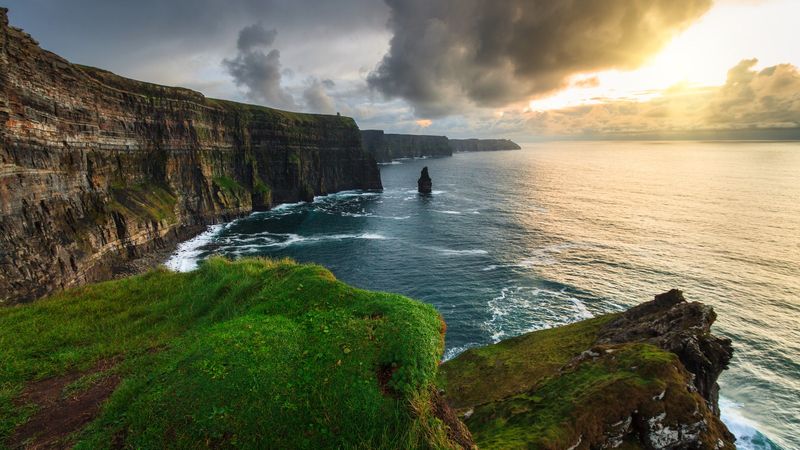
Standing at the edge of Ireland, where land meets the furious Atlantic Ocean in a dramatic 700-foot vertical drop. The wind whips your hair as seabirds soar on thermals below your feet – yes, below! From this height, even gulls appear tiny against the vastness of the churning sea.
On clear days, you can spot the Aran Islands floating on the horizon. These majestic cliffs stretch for nearly 5 miles along County Clare’s coast, with O’Brien’s Tower marking the highest point. Feeling brave? The Cliff Walk takes you along paths where nothing but good judgment separates you from the abyss.
4. The Dolomites, Italy
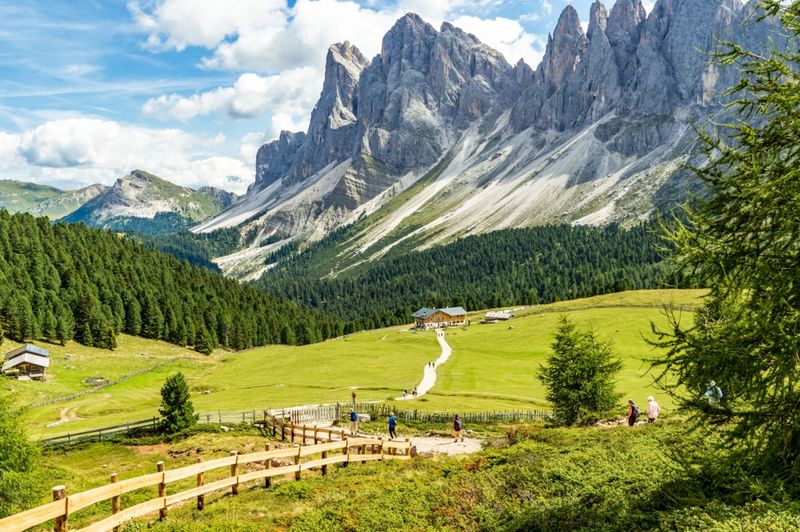
Jagged limestone peaks thrust dramatically skyward, catching the morning light in a phenomenon locals call ‘enrosadira’ – turning the normally pale mountains a fiery pink-orange. This mountain range isn’t just a playground for hikers and climbers; it’s a masterpiece of nature’s architecture.
Unlike the rounded Alps nearby, these mountains feature sharp, distinct shapes that create a fantasy landscape. Meadows filled with wildflowers spread between the peaks, dotted with charming wooden chalets. The unique blend of Italian and Austrian cultures here means you’ll fuel your adventures with both perfect pasta and hearty strudel.
Have you ever seen mountains blush? The Dolomites put on this show daily!
5. Eisriesenwelt Ice Caves, Austria
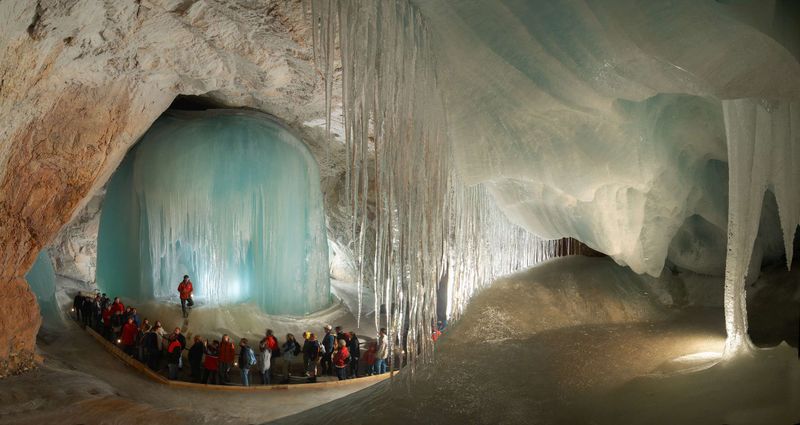
Stepping through the entrance feels like crossing into another planet – one made entirely of ice. Massive frozen waterfalls, crystalline pillars, and glittering ice formations stretch as far as the eye can see in this subterranean winter wonderland. Torchlight casts eerie shadows across the blue-white landscape, making the ice seem alive.
As the world’s largest accessible ice cave system, Eisriesenwelt stretches over 26 miles beneath the Tennengebirge mountains. The name literally means “World of the Ice Giants” – and giants they are! Some ice formations tower 75 feet high and have been growing for centuries. Bundle up though, the temperature inside never rises above freezing, even in summer.
6. Jökulsárlón Glacier Lagoon, Iceland
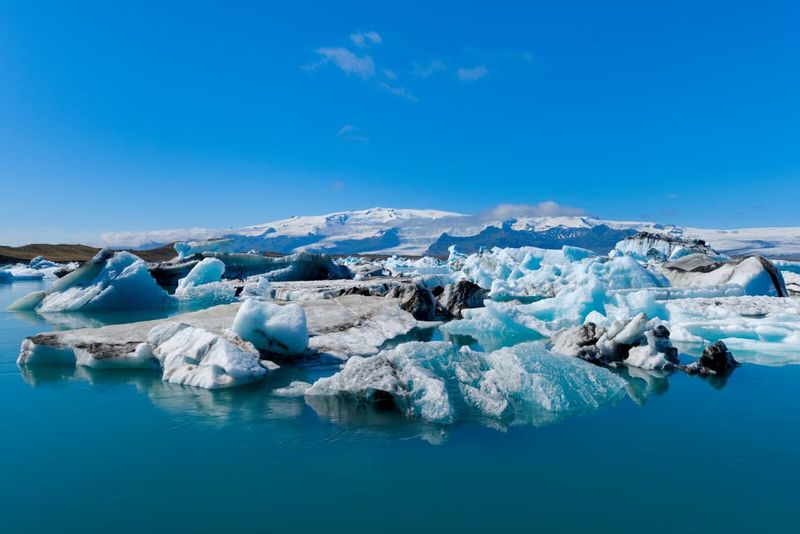
Electric blue icebergs drift silently across mirror-like waters, occasionally cracking with sounds like distant thunder. Each ice sculpture is unique – some crystal clear, others streaked with volcanic ash, all slowly making their journey from glacier to ocean in nature’s patient parade.
Formed by the retreat of Breiðamerkurjökull glacier, this lagoon grows larger every year as climate change accelerates ice melt. Seals pop their curious heads above water between the bergs, while Arctic terns dive for fish overhead. Just across the road lies Diamond Beach, where ice chunks wash ashore to glitter like jewels on black volcanic sand.
7. Krimml Waterfalls, Austria
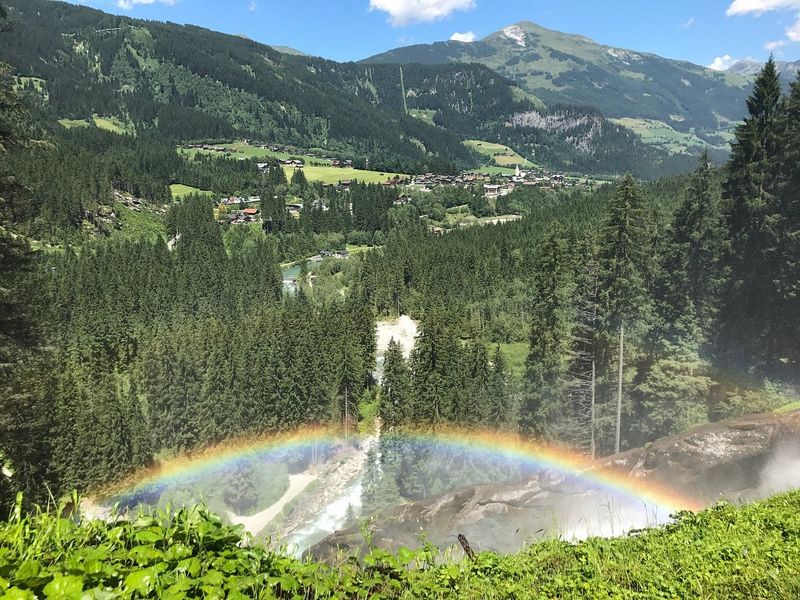
Water thunders down three massive tiers, plunging a total of 1,247 feet with such force that a perpetual rainbow dances in the mist. The ground trembles beneath your feet as you climb the trail alongside Europe’s highest waterfall, each viewpoint more spectacular than the last.
Located at the edge of Hohe Tauern National Park, these falls begin their journey high in the Alpine glaciers. The hike to the top takes about 1.5 hours, with strategically placed platforms for catching your breath – and some incredible photos! The negative ions released by the crashing water are said to purify the air, making this natural wonder a therapeutic destination.
8. Plitvice Lakes National Park, Croatia
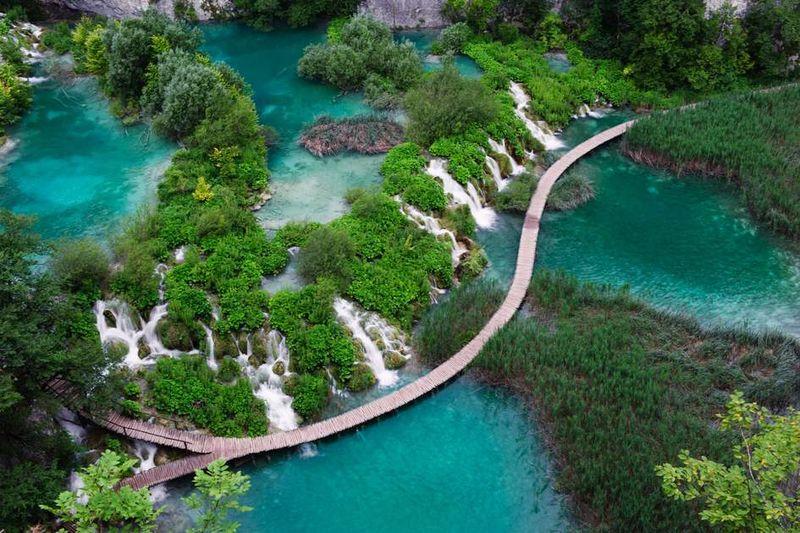
Emerald pools cascade into one another through a series of waterfalls, creating nature’s perfect staircase amid lush forests. Walking the wooden pathways feels like stepping into a fairytale – one where the water is so clear you can count fish swimming several feet below!
The park changes personality with each season. Summer brings vibrant greens and refreshing mists, autumn transforms the surrounding forests into a painter’s palette, while winter often freezes waterfalls into magnificent ice sculptures. Fancy a splash? Sorry, swimming isn’t allowed – this natural wonder is for eyes only!
9. Norwegian Fjords, Norway
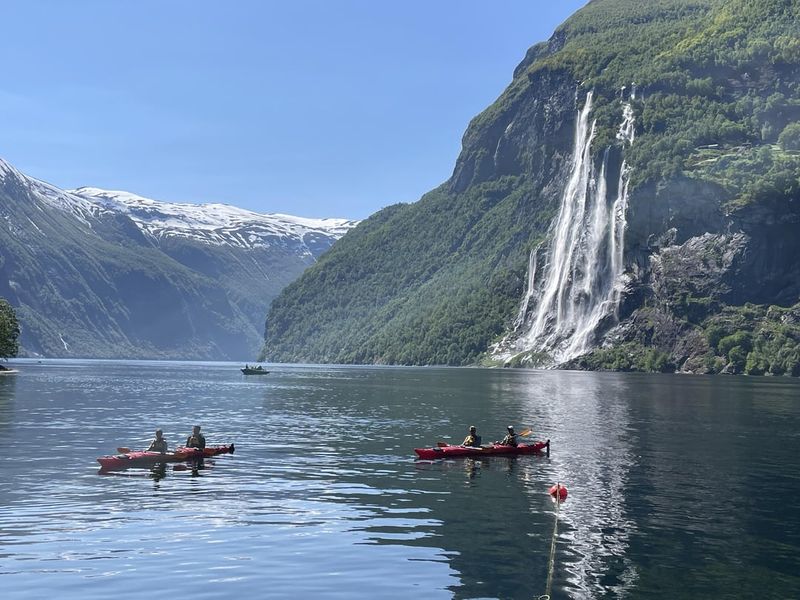
Ancient glaciers carved these deep sea valleys, leaving behind nature’s perfect marriage of mountains and ocean. Sheer cliffs plunge thousands of feet straight into dark blue waters so still they perfectly mirror the world above.
Villages cling impossibly to narrow strips of land between vertical rock and bottomless fjord.
Geirangerfjord and Nærøyfjord, both UNESCO World Heritage sites, offer the most dramatic landscapes. Waterfalls with names like “Seven Sisters” and “Bridal Veil” cascade directly into the water.
The best way to experience these giants? By boat, gliding silently beneath towering walls of stone. Or brave the Trolltunga rock formation – a horizontal stone platform jutting out 2,300 feet above Lake Ringedalsvatnet. Would you dare stand at the edge?
10. Black Forest, Germany
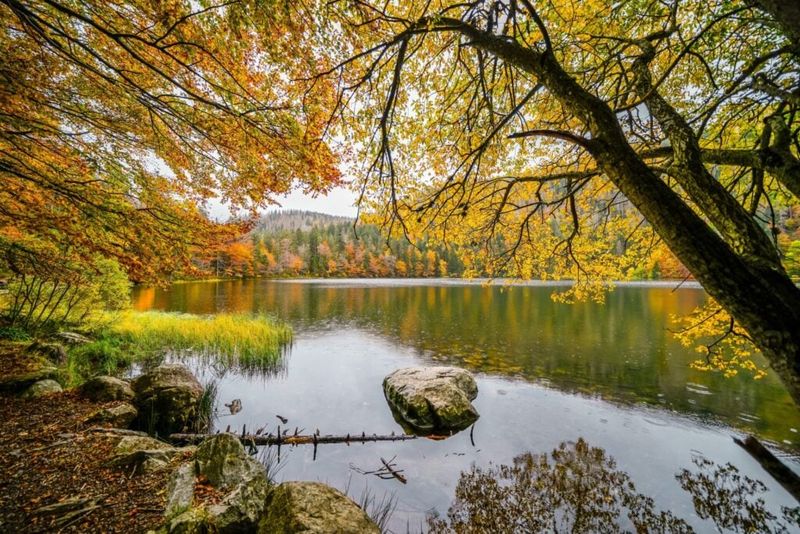
Sunlight filters through towering pines, creating dappled patterns on a carpet of moss and ferns. This enchanted woodland feels straight from the pages of Grimm’s fairy tales – which makes sense, as many were inspired by these very woods! The dense canopy creates an otherworldly atmosphere where you half-expect to encounter woodland sprites.
Beyond its mystical beauty, the Black Forest (Schwarzwald) offers natural thermal springs, crystal-clear lakes, and charming villages famous for cuckoo clocks and Black Forest cake. Hiking trails wind through 2,320 square miles of protected wilderness. The forest gets its name from the dark, dense conifers that grow so thickly they block much of the sunlight.
11. Cenobio de Valerón, Spain

Hundreds of man-made caves honeycomb this vertical cliff face, creating a mysterious ancient granary that seems to defy gravity. Carved by the indigenous Guanches people of Gran Canaria long before European arrival, this massive food storage complex sits perched precariously on a mountainside overlooking lush valleys.
The name misleadingly suggests a monastery, but archaeologists believe these 298 chambers served as the community’s food bank – strategically positioned to be inaccessible to rodents and protected from the elements. Narrow ledges and crude steps are the only way to navigate between chambers.
Standing before this engineering marvel, I couldn’t help wondering how many workers fell to their deaths during its construction. Ancient food security or architectural showing off? Perhaps a bit of both!
12. Meteora, Greece
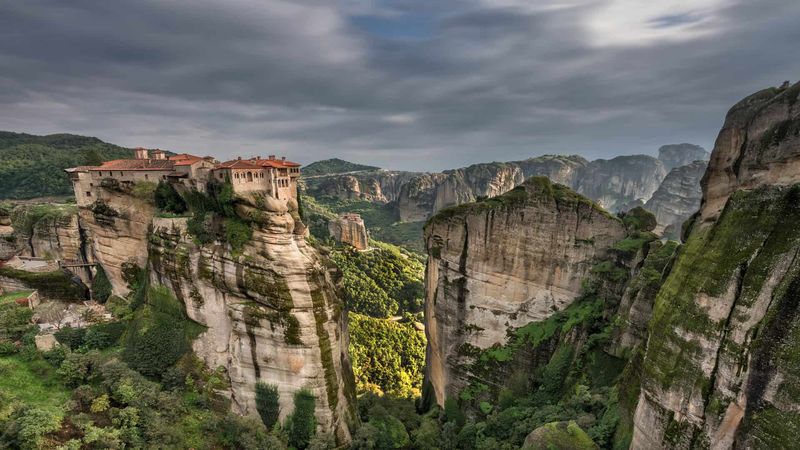
Massive stone pillars rise improbably from the earth like giant’s fingers reaching for heaven. Perched atop these natural towers sit centuries-old monasteries, built in seemingly impossible locations. How did medieval monks construct these buildings without modern equipment? It’s a question that haunts visitors as they gaze upward.
The name Meteora means “suspended in air,” perfectly describing these structures that seem to float above the plains of central Greece. Of the original 24 monasteries, six remain active today, housing Orthodox monks and nuns who welcome respectful visitors. The surrounding landscape offers spectacular hiking with views that stretch for miles. Between the natural rock formations and human ingenuity, it’s hard to decide which is more impressive!
13. Vatnajökull Glacier, Iceland

Walking through an ice cave beneath Europe’s largest glacier feels like entering a sapphire cathedral. The translucent blue ceiling arches overhead, sculpted by centuries of melting and freezing. Light filters through the ice in ways that defy description, sometimes deep cobalt, sometimes crystalline aquamarine.
Covering 8% of Iceland, this massive ice cap contains about 30 active volcanoes beneath its frozen surface – a literal clash of fire and ice! The glacier is constantly moving, creating new caves and destroying old ones each year. Winter brings the most stable ice formations and the safest exploration conditions.
The silence inside these caves is profound, broken only by the occasional drip of meltwater or distant crack of shifting ice.
14. Faroe Islands, Denmark
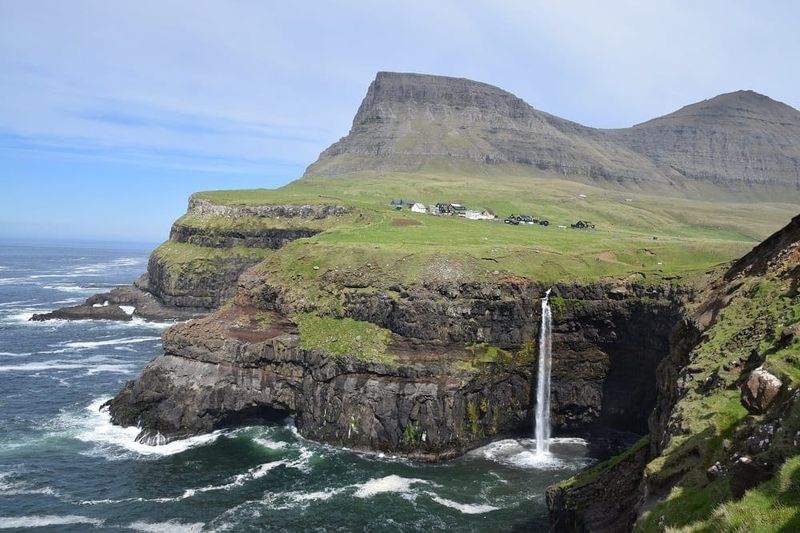
Emerald cliffs plunge dramatically into churning Atlantic waters, often disappearing into low-hanging clouds that give these islands their mystical atmosphere. Sheep outnumber people on these remote volcanic outcrops, grazing precariously on near-vertical slopes that seem better suited for mountain goats.
The archipelago’s 18 islands feature some of Europe’s most dramatic landscapes – from the optical illusion of Lake Sørvágsvatn appearing to hover above the ocean, to the perfect horseshoe-shaped Saksun village nestled in a natural amphitheater. Waterfalls seem to pour directly from the clouds into the sea.
The islands’ isolation has preserved a unique culture and language with roots in Old Norse.
15. Saturnia Hot Springs, Italy
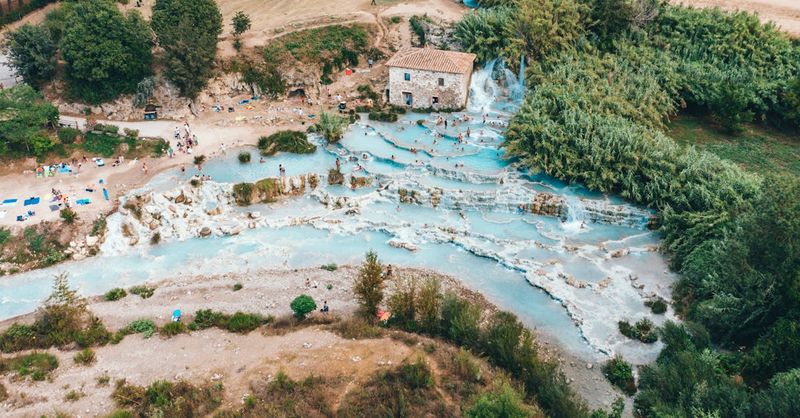
Milky blue waters cascade over naturally formed travertine terraces, creating nature’s most perfect infinity pools. Steam rises gently from these thermal baths, especially magical at dawn when the first light catches the mist. The mineral-rich water maintains a constant 99.5°F year-round – nature’s own luxury spa!
Known locally as Cascate del Mulino, these free public hot springs have drawn bathers since Etruscan times.
The high sulfur content gives the water its distinctive color and smell (yes, there’s a slight eggy aroma). The calcium carbonate deposits create the smooth, white terraced pools that step down the hillside.
If you have respiratory issues or skin conditions, these sulfur-rich thermal waters may offer natural relief, egg smell included!
16. Lake Bled, Slovenia
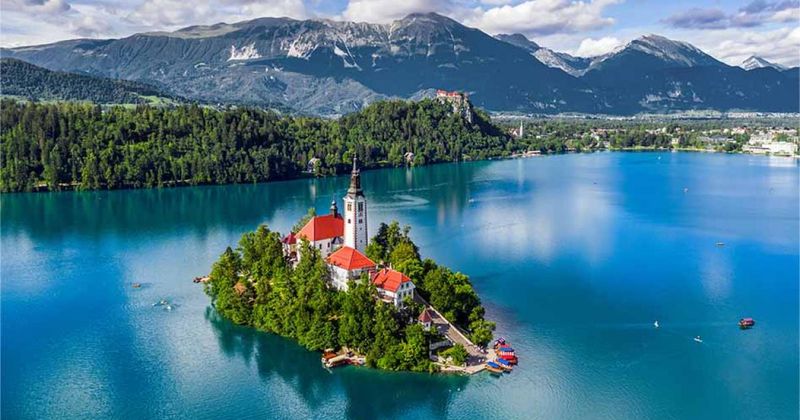
A fairytale island with a church spire rises from the middle of an alpine lake, while a medieval castle clings to a cliff overhead. The scene is so perfectly composed it almost seems artificial – yet this postcard-perfect landscape is entirely real. Traditional wooden boats called ‘pletnas’ glide silently across the emerald waters.
The lake’s thermal springs keep the water relatively warm for swimming from June through September. Hiking the surrounding trails rewards you with different perspectives of this magical setting.
Want the ultimate experience? Ring the church bell on the island – legend says it grants wishes! The cream cake known as kremšnita makes for the perfect lakeside treat after climbing the 99 steps to the island church. Is there a more picturesque spot in all of Europe?
